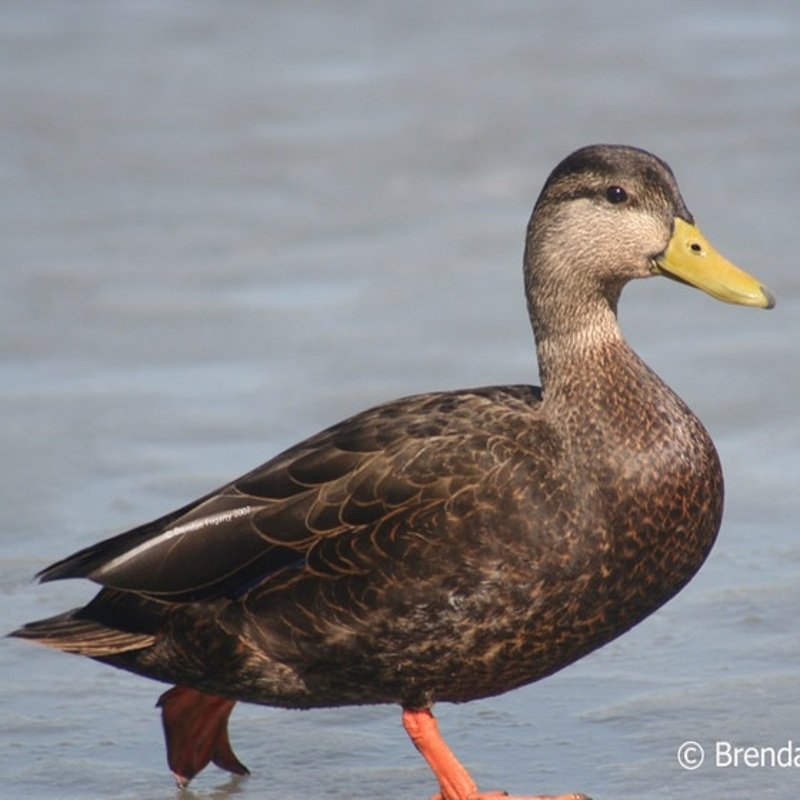American black duck (Anas rubripes) is a big dabbling duck belonging to the Anatidae family. It was first described in 1902 by William Brewster. It frequently and extensively interbreeds with the mallard, to which it is closely related. The female lays six to fourteen oval eggs with smooth shells that range in color from white to buff green.
The International Union for Conservation of Nature classifies the American black duck as a species of least concern (IUCN). It has a long history of being prized as a game bird. The loss of habitat owing to drainage, global warming, the filling of wetlands due to urbanization, and increasing sea levels are all key factors contributing to the American black duck’s decline in population.
Quick Overview: Anas Rubripes – American Black Duck
Body size: Around 19-23 in (48-58 cm) and a weight of 1406 g (49.6 oz)
Main colors: Brown, Purple, Black, White, Orange, Yellow
Range: Eastern United States
Migratory Bird: Yes
Best time of the year to see in the U.S.: January, February, December
Conservation Status: Least Concern
American Black Duck Description
A stocky, medium-sized dabbling duck with a dark brown body, a paler face and fore neck, and a purple speculum with a black border. Head is nicely striped; prominent dark eyestripe with yellow beak. In-flight, the white underwings contrast with the dark brown body. Orange legs and feet.

Size
These birds have a length of 19-23 in (48-58 cm) and a weight of 1406 g (49.6 oz). Their wings could range from 33-36 in (84-91 cm).
Feeding
The American Black Duck feeds on water plants and crop plants’ seeds and vegetative portions. In the spring and summer, they also consume a considerable number of invertebrates (insects, molluscs, and crustaceans). They graze in shallow water via grazing, probing, dabbling, or upending.
Habitat
During the mating season, the Black Duck enjoys a variety of fresh and brackish waterways in a forest setting. Alkaline marshes, acid bogs and muskegs, lakes, ponds, and stream edges, as well as tidewater environments such as bays and estuaries, are all examples of these.
Behavior
Black Ducks are particularly sociable in the fall and winter and can be found in flocks of thousands of birds. However, as pair formation begins around the end of September, partnered birds begin to disperse from the remaining unpaired birds in the population, and flock sizes steadily decline. Pair-forming behavior happens throughout a several-month period that likely peaks in midwinter and virtually all females will have formed pair bonds by April.
Anas Rubripes Scientific Classification
- Kingdom: Animalia
- Phylum: Arthropoda
- Subphylum: Chelicerata
- Class: Aves
- Order: Anseriformes
- Family: Anatidae
- Genus: Anas
- Species: Anas rubripes
Best time of the year to see
The best time to see these birds in the United States is during the winter season (December to February).
Distribution of the American Black Duck in the USA
Anas rubripes breeds from Manitoba southeast to Minnesota, and east through Wisconsin, Illinois, Ohio, Pennsylvania, Maryland, West Virginia, and Virginia, as well as in forested areas of eastern Canada to northern Quebec and Labrador.
The American Black Duck can be found in the following states in the United States – Alabama, Alaska, Arkansas, Connecticut, Delaware, Florida, Georgia, Hawaii, Indiana, Iowa, Kansas, Kentucky, Louisiana, Maine, Massachusetts, Michigan, Mississippi, Missouri, Nebraska, New Hampshire, New Jersey, New York, North Carolina, North Dakota, Oklahoma, Rhode Island, South Carolina, South Dakota, Tennessee, and Vermont.

